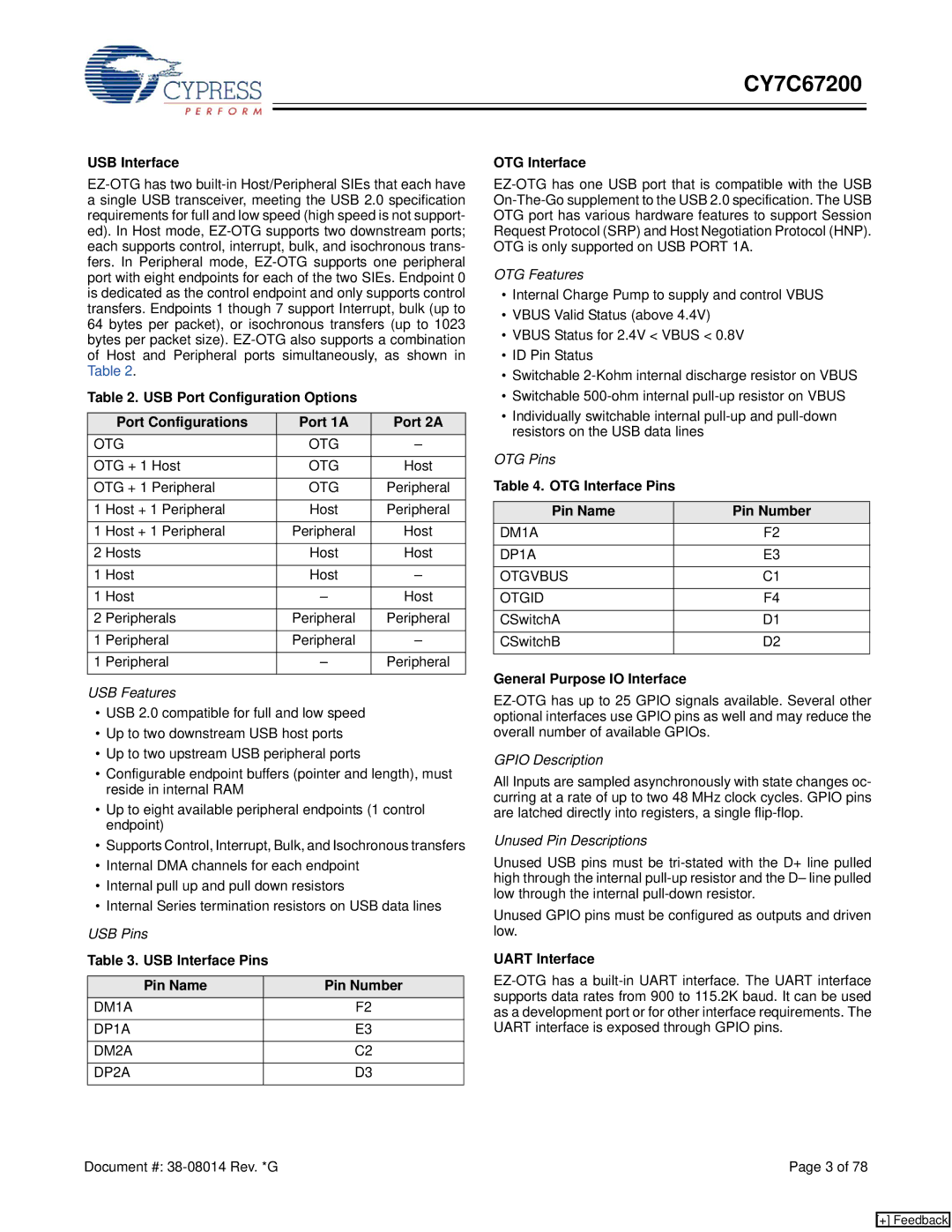
CY7C67200
USB Interface
Table 2. USB Port Configuration Options
| Port Configurations | Port 1A | Port 2A |
OTG | OTG | – | |
|
|
| |
OTG + 1 Host | OTG | Host | |
|
|
| |
OTG + 1 Peripheral | OTG | Peripheral | |
|
|
|
|
1 | Host + 1 Peripheral | Host | Peripheral |
|
|
|
|
1 | Host + 1 Peripheral | Peripheral | Host |
|
|
|
|
2 | Hosts | Host | Host |
|
|
|
|
1 | Host | Host | – |
|
|
|
|
1 | Host | – | Host |
|
|
|
|
2 | Peripherals | Peripheral | Peripheral |
|
|
|
|
1 | Peripheral | Peripheral | – |
|
|
|
|
1 | Peripheral | – | Peripheral |
|
|
|
|
USB Features
•USB 2.0 compatible for full and low speed
•Up to two downstream USB host ports
•Up to two upstream USB peripheral ports
•Configurable endpoint buffers (pointer and length), must reside in internal RAM
•Up to eight available peripheral endpoints (1 control endpoint)
•Supports Control, Interrupt, Bulk, and Isochronous transfers
•Internal DMA channels for each endpoint
•Internal pull up and pull down resistors
•Internal Series termination resistors on USB data lines
USB Pins
Table 3. USB Interface Pins
Pin Name | Pin Number |
DM1A | F2 |
|
|
DP1A | E3 |
|
|
DM2A | C2 |
|
|
DP2A | D3 |
|
|
OTG Interface
OTG Features
•Internal Charge Pump to supply and control VBUS
•VBUS Valid Status (above 4.4V)
•VBUS Status for 2.4V < VBUS < 0.8V
•ID Pin Status
•Switchable
•Switchable
•Individually switchable internal
OTG Pins
Table 4. OTG Interface Pins
Pin Name | Pin Number |
DM1A | F2 |
|
|
DP1A | E3 |
|
|
OTGVBUS | C1 |
|
|
OTGID | F4 |
|
|
CSwitchA | D1 |
|
|
CSwitchB | D2 |
|
|
General Purpose IO Interface
GPIO Description
All Inputs are sampled asynchronously with state changes oc- curring at a rate of up to two 48 MHz clock cycles. GPIO pins are latched directly into registers, a single
Unused Pin Descriptions
Unused USB pins must be
Unused GPIO pins must be configured as outputs and driven low.
UART Interface
Document #: | Page 3 of 78 |
[+] Feedback
